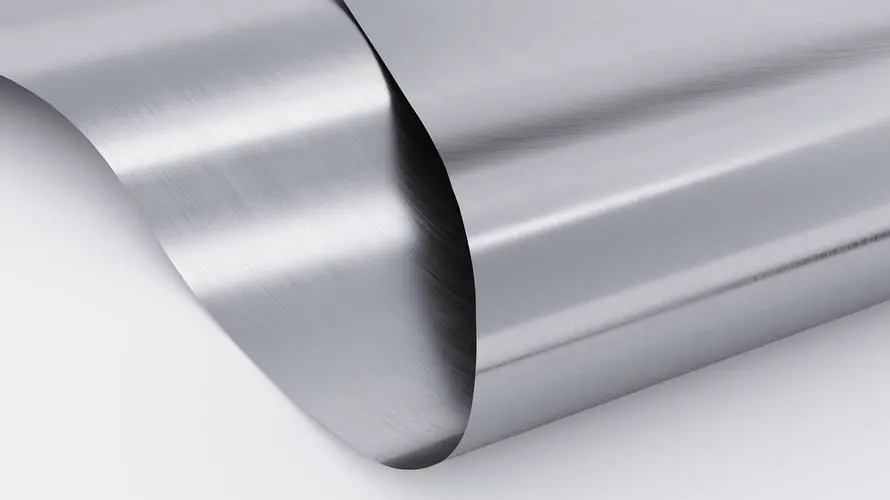PET release film, also called PET silicone oil film, is to apply a layer of silicone oil on the surface of the PET film to reduce the adhesion on the surface of the PET film and achieve a release effect. It can be divided into single-sided release film and double-sided release film. According to the release force, it can be divided into light release film, medium release film and heavy release film.
Commonly used thicknesses are: 0.012mm, 0.019mm, 0.025mm, 0.038mm, 0.05mm, 0.075mm, 0.1mm, 0.125mm, 0.188mm.
PET release films are generally used to isolate sticky materials, so they are widely used in processing and manufacturing industries such as electronics, inkjet supplies, reflective materials, tapes, self-adhesive waterproof membranes, and die-cutting.
1. After the double-sided tape touches the PET release film, part of the double-sided tape will separate in the opposite direction, and an abnormal sound will be produced when it is separated.
3. After the hole is opened and left for a period of time, the tape cannot be separated from the release film.
PET release film manufacturers are equipped with large-scale slitting and slicing machines to roll and slice according to your specifications.
PET release film is now widely used in packaging, printing, silk screen, pad printing, nameplates, membrane switches, flexible circuits, insulation products, circuit boards, laser anti-counterfeiting, lamination, electronics, sealing materials, reflective materials, waterproofing Materials, medicine (paper for plasters), sanitary paper, adhesive products, die-cutting and punching processing and other industries.

Characteristics of single/double-sided PET release film
Single/double-sided PET release film is widely used in die-cutting and lamination of adhesive products due to its excellent high temperature resistance. The product uses PET film as the base material, and is evenly coated with a very thin layer of release agent on one or both sides. The PET release film has a smooth and smooth surface, uniform coating, and no wrinkles, particles, bubbles and other defects. The product has excellent physical properties, small thickness tolerance and low thermal shrinkage. It has high tensile strength, stretch resistance and chemical inertness.
Therefore, when the PET release film is combined with an adhesive product, there is no migration phenomenon in the release film, eliminating the hidden danger of the silicone release film transferring to the material it is close to; and the PET release film is single-sided or double-sided coating unit The uniformity of area weight is very small; the base film has excellent mechanical strength and chemical properties. It is understood that the high temperature resistance can reach 180°C in a long time and 200°C in 10 minutes, so it can be used under extreme weather conditions. It has high stability and extremely long shelf life.
Instruments and steps required for release film release force experiment
Instruments and samples: PT-6086S peel tester, TESA 7475 test tape;
Scope of application: Release force test of release film;
Steps:
a. Take a piece of TESA 7475 tape with a width of 25.4mm and a length of 200mm and stick it on the test surface (release surface) of the film, and roll it back and forth 3 times with a standard rolling roller. Note: It should be rolled while applying the tape to avoid the time when applying the tape. There are air bubbles between the release film and the release film;
b. Let the tape stand for 20 minutes. Note: The temperature and humidity in the laboratory are controlled at 25±3℃ and 50±10% respectively;
c. Use double-sided tape to stick to the non-test side of the sample and fix it on the standard steel plate to be tested;
d. Install the material on the clamp, and use a peel tester to test the tape by stretching it at an angle of 180°. At this time, the data displayed on the computer is the release force of the test piece (g/in). Take 5 values. The average value is the test result.
Difficulties and Solutions in Die-cutting of Release Films
I encountered some minor problems during the die-cutting of the release film. The editor will sort out specific possible situations and solutions for release film die-cutting for you:

Solution: There is noise when separated. The first is that the release force is too large, and the second is the result of uneven glue mixing.
2. Anti-separation means that the raw materials to be stripped are not separated.
Solution: Anti-separation is mainly caused by unsatisfactory pairing of released forces. There are two reasons. First, the release film is not strictly tested before leaving the factory, the inspection equipment is incomplete, and the production process is unstable, which makes the release force of products of the same model and specifications far apart. The result is that the die-cutting factory inserts a mold release film that subconsciously uses the mold release force they think. Second, the release layer has insufficient aging resistance and changes greatly over time.

Solution: Cannot be separated from the tape after pasting. This is generally due to uneven desizing. If some release films are seriously missing, there will be no actual release effect at a certain location, resulting in the tape being unable to separate. Round blade die cutting should avoid this problem.
4. The release force of the release film is very low. I think the release layer is easy to fall off
Solution: The greasy feeling on the peeling surface is mainly caused by the management scheme of the peeling machine. It’s not that greasy items are necessarily bad. In fact, some greasy-feeling release films have symmetrical surface glue adjustments and stronger residual adhesion rates. But there are some simple reasons that the sealing is not very good. Dimethicone comes off easily. This can be determined by inspection.
5. During the entire unwinding process, the release film will generate static electricity and absorb dust.
Solution: Generally speaking, the solution to the tip discharge problem is permanent, except for the physical solution. Generally, electronic optical die-cutting factories have purification workshops and mechanical equipment for static elimination. The problems are not easy and very big. Antistatic desizing can use demanding release films.




